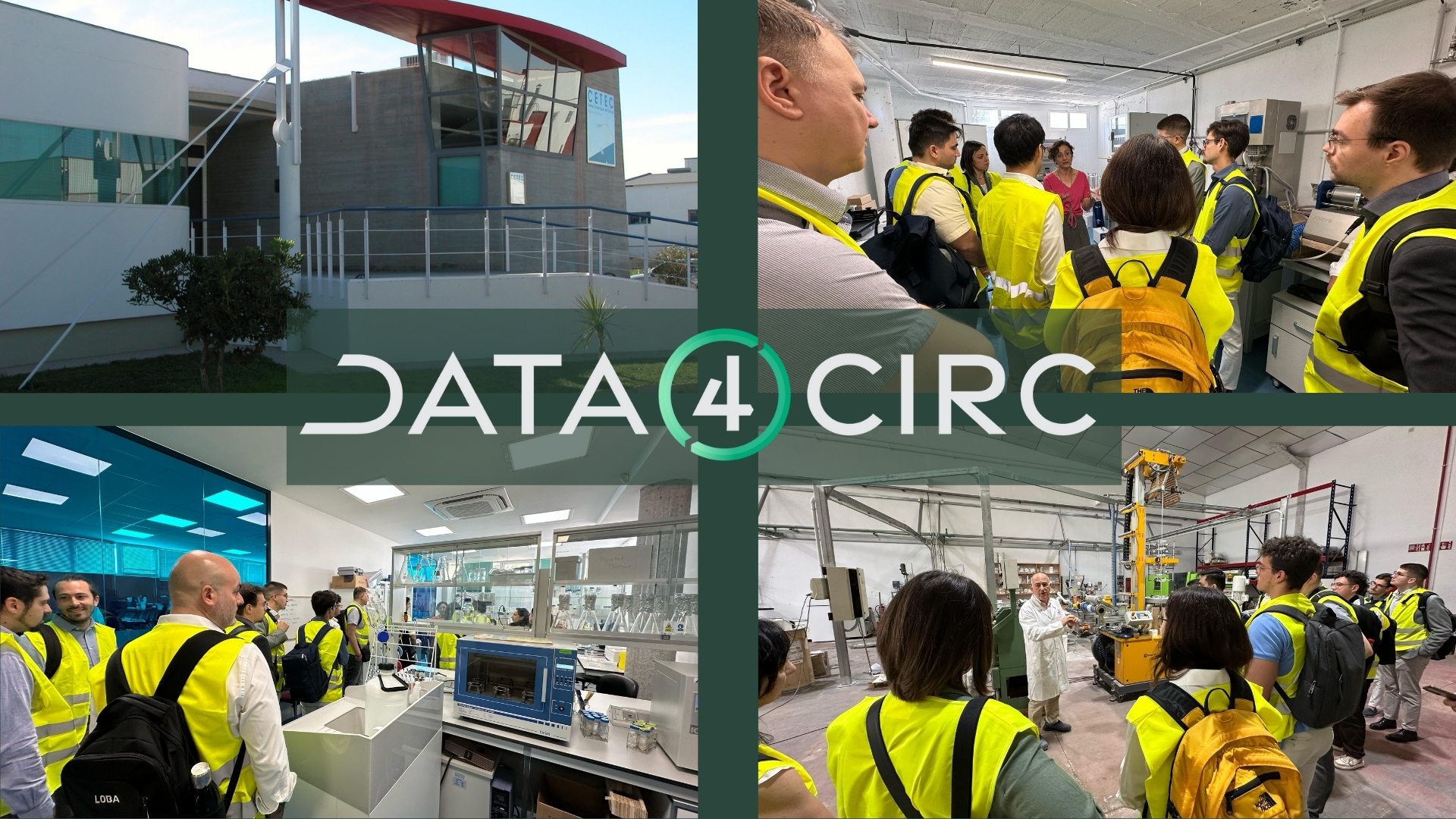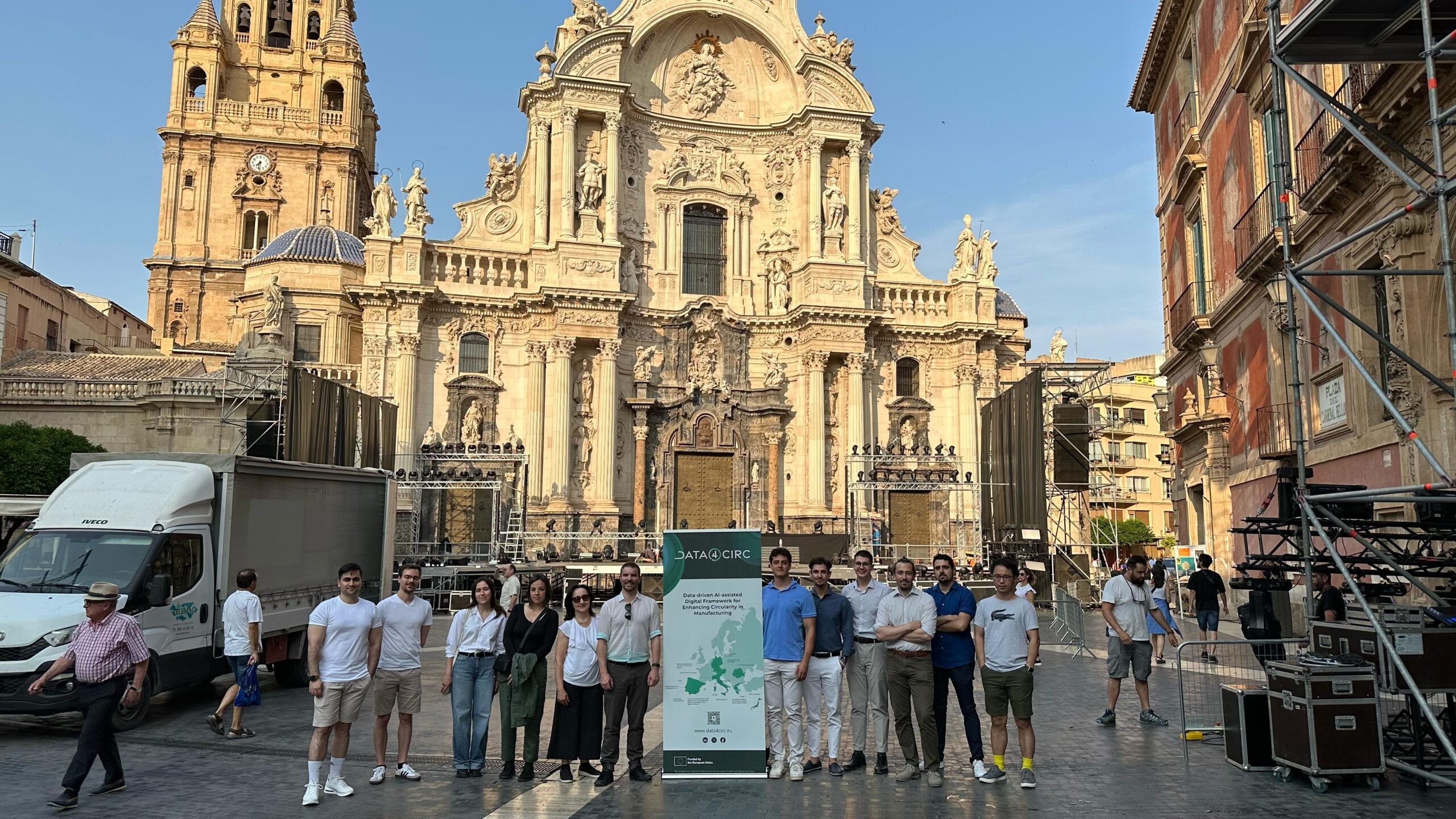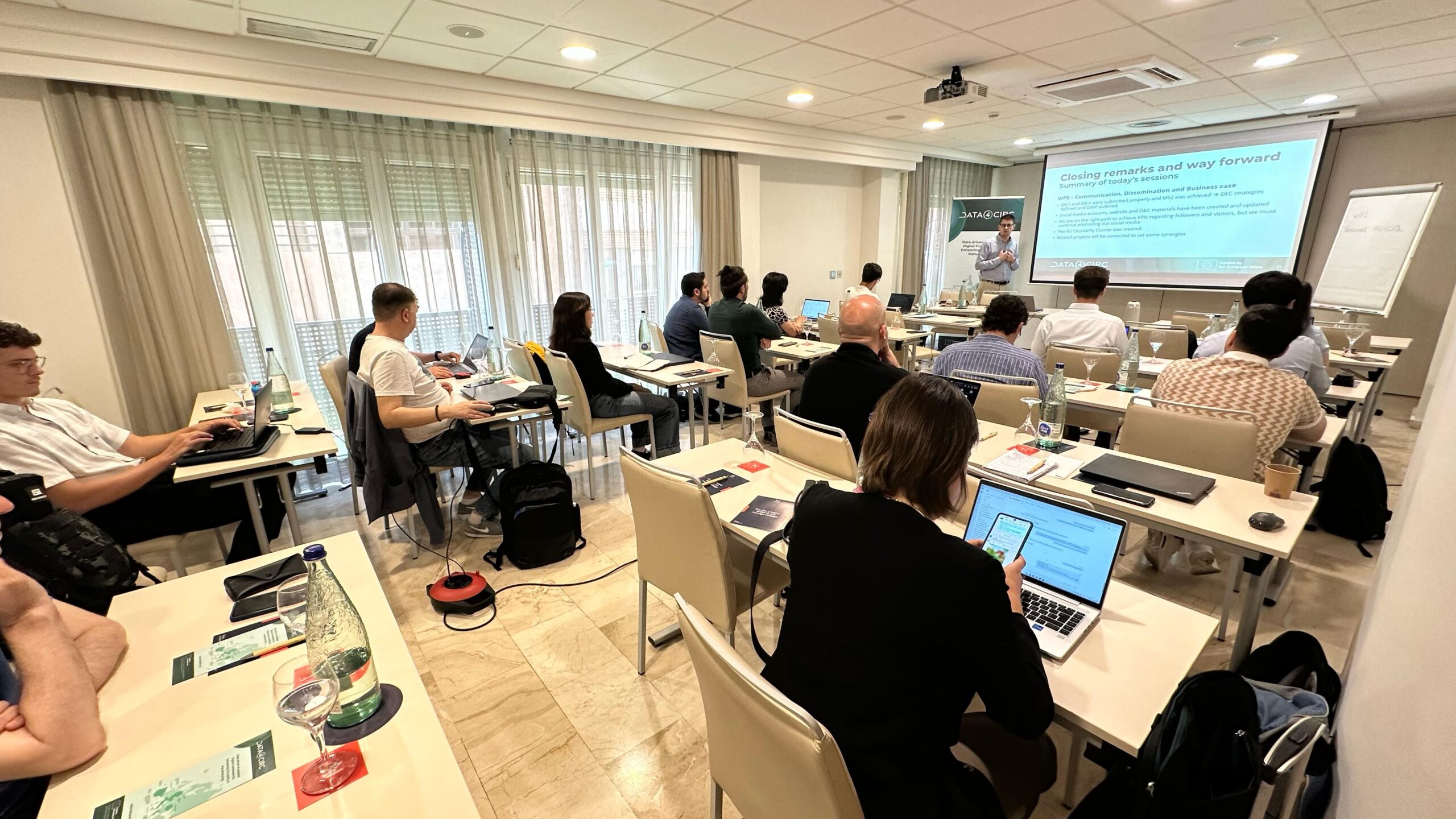Meeting DATA4CIRC Project partners GWC & CETEC in Murcia, Spain
Published June 2025 © DATA4CIRC
The DATA4CIRC partners gathered together in Murcia, Spain, from 4th – 5th June 2025 to visit project partners GWC & CETEC and find out more about how they’re recycling agricultural plastics. We also held our first General Assembly meeting. Read on to find out exactly what we got up to (and maybe learn a few fun facts about the region!)
DATA4CIRC at Green World Compounding
Murcia, which is about to celebrate the 1200th anniversary of its founding, is located on the Segura River and is the seventh largest city in Spain. Although it is actually located in one of the driest regions of Europe, the city’s founders created an imaginative and complex network of irrigation channels around the river that enabled the city to flourish as an agricultural centre. This history of innovative and efficient use of resources served as an inspiration as the DATA4CIRC partners met!
The first stop on our itinerary was the Headquarters of DATA4CIRC project partner Green World Compounding (GWC). Here we started with a short introduction to GWC’s work and their role in the project, in particular their contribution to our work promoting circularity within the agricultural plastics industry.

The DATA4CIRC partners listening to the introduction of the project’s Use Case #1 (Recycling of Agricultural Plastics) © DATA4CIRC 2025
Although the Huerta (a valuable ecosystem that surrounds the city of Murcia, irrigated by the Segura River) was cultivated by the Romans, the most important developments came under the Spanish Muslims, who drained marshlands and built an efficient irrigation system. The many farms and orchards, which made the Murcia region famous, now often use plastic nets and plastic sheeting to project crops from pests and to help reduce the use of scarce water resources by helping keep moisture in the ground. An aerial view gives some idea of the extent of this!

The DATA4CIRC partners visiting GWC’s facilities and observing the processing of waste agricultural plastic © DATA4CIRC 2025
The GWC plant in Murcia handles more than 30 million kilos of recycled plastic per year, making GWC one of the leading companies in the recycling of agricultural plastics! When the plastic arrives, it must first be carefully cleaned (mulch film is complex because, depending on collection practices, it can retain up to 70% of its weight in soil). During the washing process, organic residues, pesticides, and soil are removed, and the resulting water is treated in an internal treatment plant at GWC, before the water is recycled to avoid unnecessary consumption in such a dry region. Once the plastic is free from soil and other contaminants, it is mechanically shredded, before it is melted and mixed with various additives, such as antioxidants, clarifiers, and deodorants, to restore and enhance some of the properties lost during the plastic’s lifecycle (the environmental impact of these additives is, of course, considered in assessment of the final products).

The dirty waste agricultural plastic before recycling and the clean plastic pellets after recycling © DATA4CIRC & Green World Compounding 2025
The final outcome is clean, plastic pellets, which can be used to make new products by companies such as Asociacion Empresarial de Investigacion Centro Technologico del Calzado y del Plastico de la Region de Murcia (CETEC), which was the second stop on our itinerary!
DATA4CIRC at CETEC – Asociacion Empresarial de Investigacion Centro Technologico del Calzado y del Plastico de la Region de Murcia
At CETEC, the DATA4CIRC team was shown around their labs, where their experts demonstrated their research capabilities and the technological advances that support the development of sustainable materials. We learned that material that might be recyclable in one country might not be in another due to differing infrastructures – meaning processes must be developed holistically to take account of the local context. They explained the process of obtaining a new film through the extrusion and the blown film processes.
These processes mechanically treat plastic pellets (which come as a raw material from GWC’s recycled plastic) to transform them into a recycled film, giving this plastic a second life and preventing it becoming waste! In extrusion, the pellet is melted with the help of heat and pressure to form a film that can be adapted to the required size and thickness.
The blown film technique is widely used to produce thin, flexible films that are used in packaging, agriculture, and other industries. Plastic pellets are melted and passed through a circular mould, where the molten plastic is inflated with pressurised air to form a bubble for cutting and winding into rolls or reels. This process produces seamless tubular films of uniform thickness and excellent mechanical properties.
Thanks to the digital tools DATA4CIRC is developing, GWC and CETEC will be able to better trace the origin, content, and prior uses of the materials they are recycling and guarantee safety for end consumers.

DATA4CIRC partners taking a tour of CETEC’s facilities © DATA4CIRC & Asociacion Empresarial de Investigacion Centro Technologico del Calzado y del Plastico de la Region de Murcia 2025
It was immensely valuable, and highly motivating, to see first-hand one of the ways in which DATA4CIRC will be demonstrating its technology for enhancing circularity in manufacturing. Once the field trip concluded, it was time to sit down for business and for the project’s technical work packages to update the consortium on progress made to date and plans for the coming months.
Day 1 of the General Assembly finished off with a return to Murcia and a guided tour of the city. The town was busy preparing for its upcoming anniversary celebrations, but that didn’t stop us taking in some fantastic sights, in particular the Cathedral, which was constructed on a former mosque from the late 14th century onwards (construction only finished 400 years later)!

The DATA4CIRC team taking a break to enjoy the sights in Murcia © DATA4CIRC 2025
As the sun set over the historic city, the day wrapped up on a high note as bright minds and fresh ideas came together over dinner, making it not only a successful milestone for the project but also a truly enriching experience for all involved. From deep dives into data security and user verification/identification, to insightful discussions on data-driven solutions, the conversation was productive and informative. And it goes without saying that the Spanish food was excellent!
Day 2 of the General Assembly fell on World Environment Day, which seemed most appropriate! It was only a half-day meeting, but it concluded positively as goals for the coming months were set out.

Conclusion of the DATA4CIRC General Assembly on Day 2 of our trip to Murcia © DATA4CIRC 2025
Beyond the meeting rooms, Murcia’s rich cultural heritage added a special spark to DATA4CIRC’s first General Assembly. Wandering through Murcia’s ancient streets together, after the hands-on experience of how innovative plastic recycling processes and cutting-edge material recovery techniques are helping to close the loop in plastic use, was energising, reinforcing the importance of collaboration in driving circular innovation forward.
If this meeting is anything to go by, the future of DATA4CIRC looks bright. Be sure to keep an eye on www.data4circ.eu — we’re just getting started! You can also keep up to date on the latest developments from our project by following us on the DATA4CIRC social media channels:
